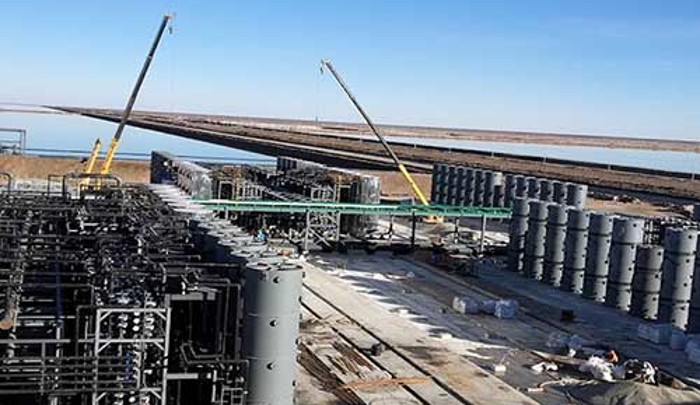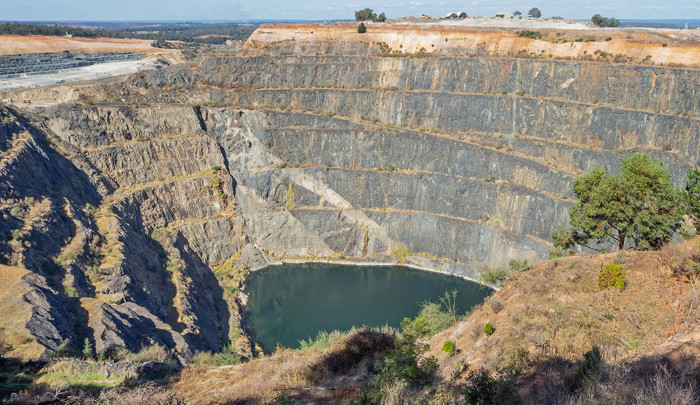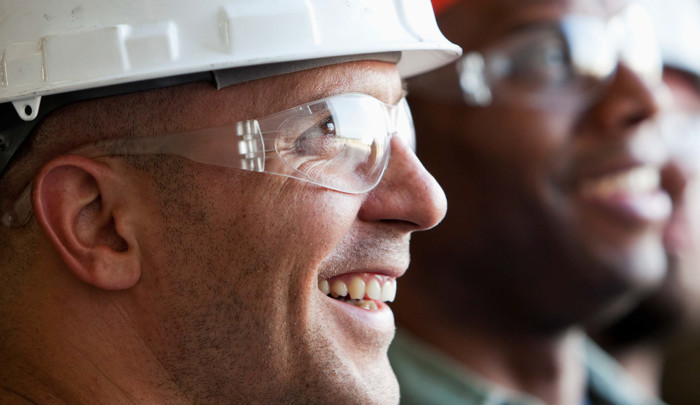What Is Direct Lithium Extraction?
Unlocking the future of lithium extraction: Discover the sustainable and efficient power of Direct Lithium Extraction (DLE).
Direct Lithium Extraction: Revolutionizing Sustainable Lithium Production
In pursuing a sustainable and efficient future, the demand for lithium, a critical component in renewable energy storage and electric vehicle batteries, has skyrocketed. To meet this demand, the extraction of lithium must evolve. Direct Lithium Extraction (DLE) has emerged as a game-changing technology, offering a more efficient, environmentally friendly, and cost-effective solution. In this blog post, we will explore the concept of DLE, its advantages over traditional extraction methods, and its potential to transform the lithium industry.
Table of contents:
Understanding Direct Lithium Extraction
The global shift towards renewable energy sources and electric mobility has underscored the vital role of lithium in our transition to a sustainable future. However, traditional lithium extraction methods, such as evaporation ponds and mineral processing techniques, pose significant challenges. These methods are time-consuming and water-intensive and can result in detrimental environmental impacts, including habitat destruction and water pollution - Furthermore, the growing demand for lithium calls for a more efficient and scalable extraction process.
Direct Lithium Extraction (DLE) is a groundbreaking approach that revolutionizes lithium extraction. Unlike conventional methods, which rely on evaporation and mineral concentration, DLE involves the selective extraction of lithium ions directly from lithium-rich solutions. This method bypasses the need for evaporation ponds, allowing for faster extraction rates, reduced water consumption, and minimized environmental impact.
DLE technologies utilize specialized adsorbent materials, membranes, or solvent extraction processes to capture lithium ions selectively. By targeting lithium specifically, DLE methods minimize impurities and enable the production of high-purity lithium compounds, which can be used directly in battery manufacturing. This efficiency not only reduces production costs but also lowers the overall environmental footprint of lithium extraction.
These technologies can be classified into three main categories: adsorption, ion exchange, and solvent extraction (others are emerging):
- Adsorption-Based DLE
In adsorption-based DLE, lithium (Li) molecules are physically adsorbed onto the surface of a sorbent material. This process involves selectively capturing Li molecules from a lithium-loaded solution, with chemicals or water often used as a stripping solution to desorb the lithium ions. Adsorption-based DLE technologies have shown promise in efficiently extracting lithium from brines.
- Ion Exchange-Based DLE
Ion Exchange-based DLE involves trading lithium ions for cations within the structure of a sorbent material. This process requires an acid solution for stripping and recovering the lithium. By exchanging lithium ions with other ions present in the solution, ion exchange-based DLE technologies demonstrate the potential to extract lithium effectively from complex brines containing high concentrations of various ions.
- Solvent Extraction-Based DLE
Solvent extraction-based DLE relies on exchanging lithium ions between brine and an organic liquid phase. The organic liquid contains an extractant that forms complexes with lithium or lithium compounds in the brine. Solvent extraction-based DLE technologies have the advantage of selectively extracting lithium from complex brines while maintaining high purity levels.
Advantages of Direct Lithium Extraction
Direct Lithium Extraction offers several significant advantages over conventional extraction methods:
Direct Lithium Extraction (DLE) is a groundbreaking technology that revolutionizes the lithium extraction process. Please uncover the remarkable advantages of DLE, from its outstanding efficiency and reduced water consumption to its potential to transform the lithium industry and pave the way for a greener future.
-
Faster Time to Market
DLE drastically reduces extraction time, enabling a faster and more streamlined production process than conventional methods. Eliminating evaporation ponds, which can take months or even years, allows for quicker lithium recovery. This efficiency boost helps meet the increasing demand for high-purity lithium products in a timely manner and supports the rapid expansion of the electric vehicle market and renewable energy storage.
-
Minimized Water Consumption
Traditional lithium extraction methods consume vast amounts of water, contributing to water scarcity concerns. Conversely, DLE significantly reduces water usage by eliminating or minimizing the need for evaporation ponds. By extracting lithium directly from lithium-rich solutions, DLE preserves precious freshwater resources and alleviates the strain on local ecosystems.
-
Reduced Environmental Impact
One of the most compelling aspects of DLE is its potential to minimize the environmental impact associated with lithium extraction. Conventional methods often result in soil degradation and water pollution and destroy habitat and biodiversity. DLE mitigates these impacts by circumventing large-scale evaporation and utilizing selective extraction techniques, resulting in a smaller ecological footprint.
-
Lower Carbon Intensity
DLE technologies contribute to a lower carbon footprint by reducing energy consumption and greenhouse gas emissions associated with lithium extraction. DLE plays a vital role in decarbonizing the energy sector by employing more efficient and targeted extraction methods.
-
Cost-Effectiveness
With its streamlined and efficient extraction process, DLE offers cost advantages compared to conventional methods. Reducing extraction time, lowering water consumption, and diminishing the need for extensive purification steps contribute to cost savings. As the technology continues to advance and scale, DLE has the potential to become a more economically viable option for sustainable lithium production.
Technological Benchmark
Comparing different Direct Lithium Extraction approaches with traditional lithium mining.
Our patented solution leverages Direct Lithium Extraction (DLE) technology, utilizing advanced adsorption techniques alongside cutting-edge water treatment processes. By sourcing wastewater from oil and gas production as our primary feedstock, we can accelerate lithium production timelines and significantly reduce costs compared to traditional methods, offering the most efficient and cost-effective solution in the market.

Lithium Harvest Solution |

DLE from Brine |

Solar Evaporation Brine Extraction |

Hard Rock Mining |
|
|---|---|---|---|---|
| Feedstock | Produced water | Continental brine | Continental brine | Rock / spodumene |
| Project implementation time | 12-15 months | 5-7 years | 13-15 years | 8-10 years |
| Lithium carbonate production time | 2 hours | 2 hours | 2-3 years | 3-6 months |
| Lithium yield | >95% | 80-95% | 20-40% | 6-7% |
| Average footprint per 1,000 mt LCE | 1.4 acres | 1.4 acres | 65 acres | 115 acres |
| System design | Modular and mobile | Mobile / stationary | Stationary | Stationary |
| Environmental impact | Minimal | Minimal | Soil- and water contamination | Soil- and water contamination |
| Water consumption per 1,000 mt LCE | 20 million gallons | 80 million gallons | 550 million gallons | 250 million gallons |
| CO₂ footprint per 1,000 mt LCE | Neutral | 1.5 million kg | 5 million kg | 15 million kg |

Lithium Harvest Solution

DLE from Brine

Solar Evaporation Brine Extraction

Hard Rock Mining
Direct Lithium Extraction Applications and Future Prospects
Direct Lithium Extraction has diverse applications across various lithium sources, including brine deposits, geothermal fluids, and even direct lithium extraction from oilfield wastewater. By harnessing DLE technology, companies can extract lithium from previously untapped resources, diversifying the supply chain and reducing dependence on limited geographical sources.
The future prospects of DLE are promising. Ongoing research and development efforts aim to further improve DLE technologies' efficiency, scalability, and economic viability. Collaboration between industry experts, researchers, and technology developers is key to unlocking the full potential of DLE and realizing a sustainable lithium industry.
Direct Lithium Extraction (DLE) offers a promising path forward in the quest for sustainable and efficient lithium extraction. By providing increased efficiency, minimized water consumption, reduced environmental impact, and cost-effectiveness, DLE has the potential to transform the lithium industry. As the demand for lithium continues to rise in the renewable energy and electric vehicle sectors, embracing DLE is crucial for meeting these demands sustainably. With ongoing advancements and widespread adoption, DLE can contribute to a greener and more sustainable future, powering the transition to a low-carbon economy.
Our Innovative DLE Technology
Turning waste into value: Lithium Harvest’s innovative DLE technology extracts lithium from oilfield wastewater.
Direct Lithium Extraction (DLE) technologies have paved the way for significant advancements in lithium extraction, offering more sustainable and efficient solutions. Lithium Harvest is at the forefront of this revolution, specializing in a patented DLE technology combined with advanced water treatment that extracts lithium from oilfield wastewater.
Lithium Harvest's groundbreaking approach transforms oil and gas wastewater, known as produced water, into a valuable resource. By combining our expertise in water treatment and extraction, we have created a solution that makes high-quality lithium compounds and minimizes the environmental impact associated with oilfield wastewater disposal.
Lithium Harvest stands at the forefront of the Direct Lithium Extraction revolution, utilizing our patented and innovative DLE solution to extract lithium from oilfield wastewater. As water treatment experts, we possess the knowledge and expertise to effectively manage the extraction of critical minerals from wastewater while maintaining a strong focus on sustainability. With our pioneering approach, we are reshaping the lithium industry, promoting a circular economy, and building a better future for generations to come.

Lithium Extraction
You may also be interested in:


